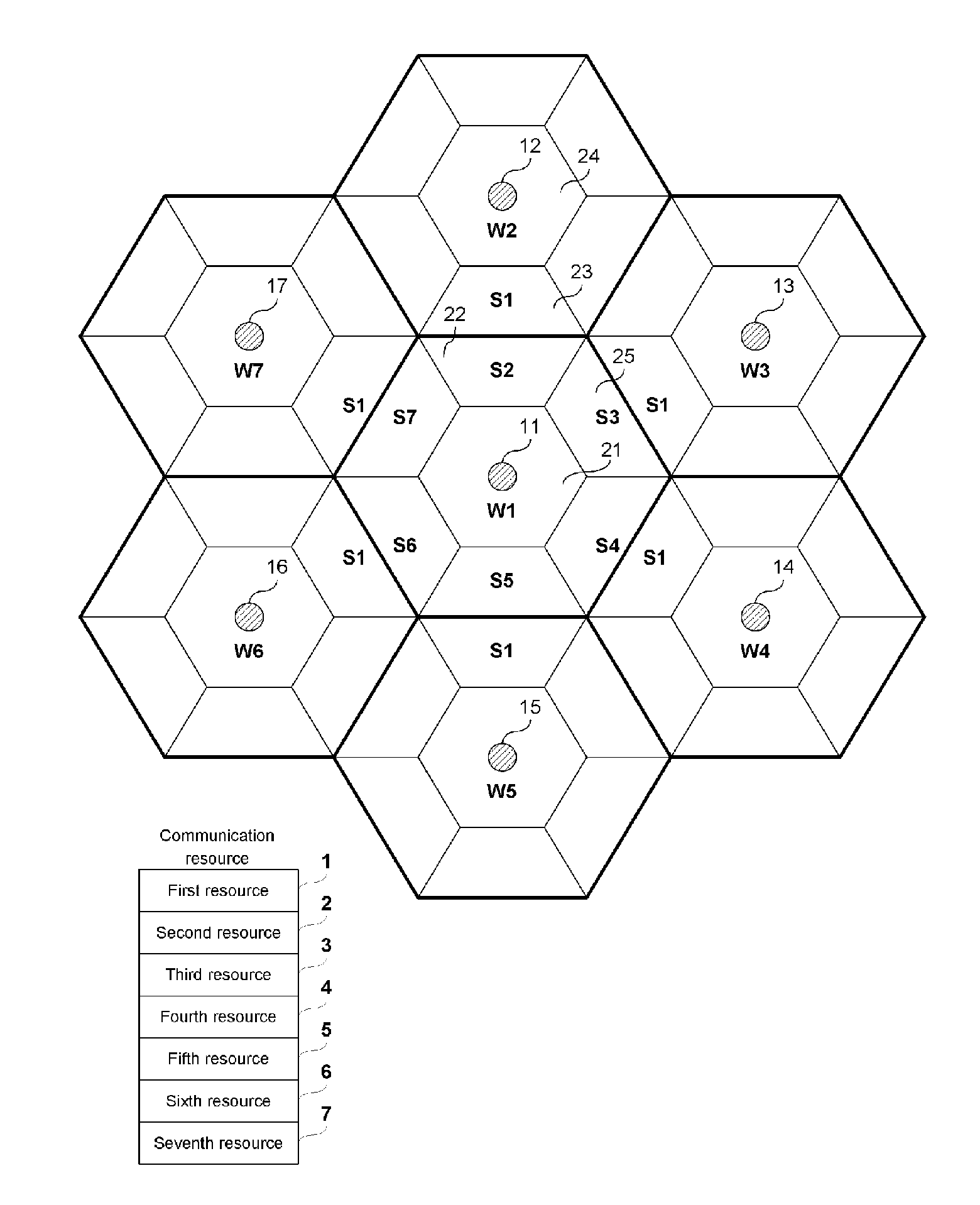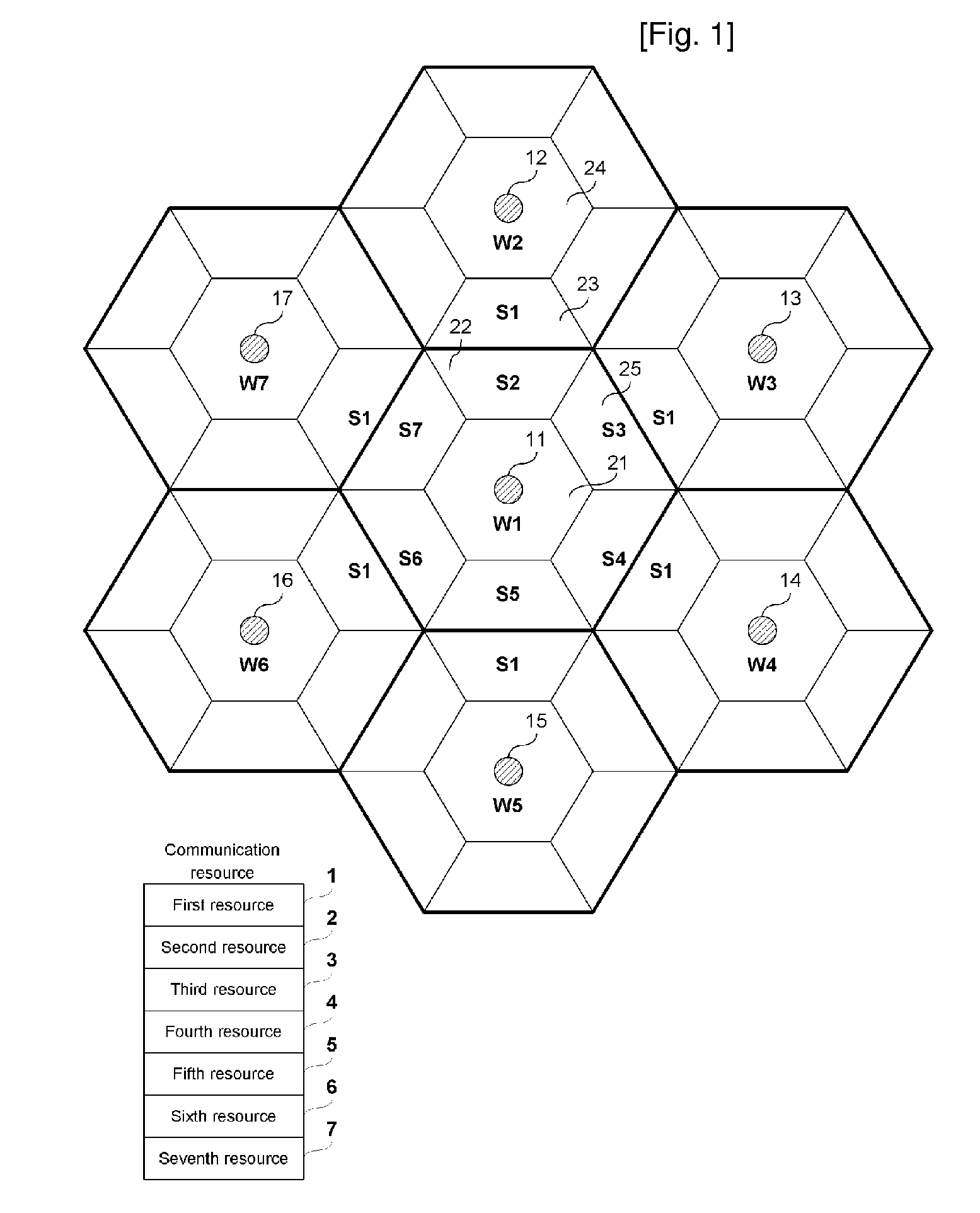Communication resource allocation method of base station
a technology of communication resource and base station, applied in the field of communication resource allocation method of base station, can solve the problems of inability to maintain the appropriate interference by interference averaging, interference processing problem of adjacent cells again, and the efficiency of frequency reuse is decreased, so as to increase the ratio of the first speaking resource and the effect of reducing the ratio of the second speaking resour
- Summary
- Abstract
- Description
- Claims
- Application Information
AI Technical Summary
Benefits of technology
Problems solved by technology
Method used
Image
Examples
Embodiment Construction
[0033]In the following detailed description, only certain exemplary embodiments of the present invention have been shown and described, simply by way of illustration. As those skilled in the art would realize, the described embodiments may be modified in various different ways, all without departing from the spirit or scope of the present invention. Accordingly, the drawings and description are to be regarded as illustrative in nature and not restrictive. Like reference numerals designate like elements throughout the specification.
[0034]When it is described that an element is coupled to another element, the element may be directly coupled to the other element or coupled to the other element through a third element.
[0035]Hereinafter, frequency, time, and code or the like used to perform a communication between the terminal and the base station is referred to as “a communication resource”.
[0036]Considering a propagation environment, the base station-peripheral area is referred to as “...
PUM
 Login to View More
Login to View More Abstract
Description
Claims
Application Information
 Login to View More
Login to View More - R&D
- Intellectual Property
- Life Sciences
- Materials
- Tech Scout
- Unparalleled Data Quality
- Higher Quality Content
- 60% Fewer Hallucinations
Browse by: Latest US Patents, China's latest patents, Technical Efficacy Thesaurus, Application Domain, Technology Topic, Popular Technical Reports.
© 2025 PatSnap. All rights reserved.Legal|Privacy policy|Modern Slavery Act Transparency Statement|Sitemap|About US| Contact US: help@patsnap.com



